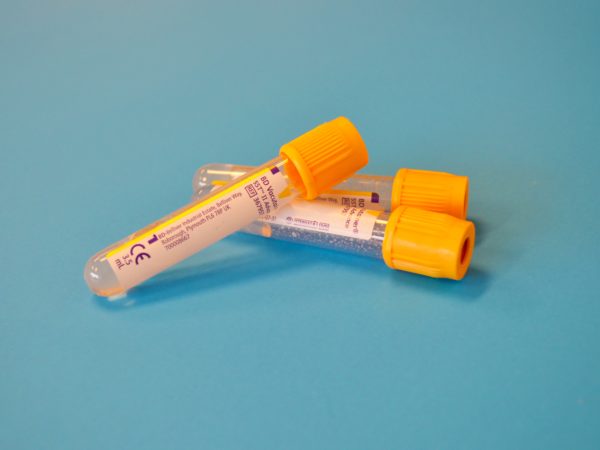World-leading experts on child development are calling for global action to address risk factors and improve support for adolescents.
Adolescence has never been longer or more important for individuals and the human race, claim a group of eminent Australian child development experts, who have called on global decision makers to extend their focus to this group for the sakes of adolescents and their future offspring.
Professor Craig Olsson, Director of Deakin’s Strategic Research Centre for Social and Early Emotional Development, collaborated with Professor George Patton from the Murdoch Children’s Research Institute (first author) and a number of colleagues to develop the report “Adolescence and the Next Generation,” published in “Nature,” the world’s most highly-cited interdisciplinary science journal, on 21 February.
The report brought together data from around 200 countries and from more than 140 recent research papers. It has been distributed to the World Health Organisation, governments globally, UN organisations, such as the World Health Organisation, health funding bodies, such as the National Health and Medical Research Council, and philanthropic organisations, such as the Bill and Melinda Gates Foundation.
“We are seeking to stimulate new thinking and new directions,” said Professor Olsson. “The paper is about the changing nature of adolescent development and has profound policy implications.”
In terms of achieving optimal human development, the researchers argue, while antenatal, infant and early childhood interventions are important, they often come too late to make a significant difference. Adolescence is critical.
“Achieving this new emphasis is a global health task that has to be tackled by governments, WHO and high-level organisations capable of directing the resources needed,” said Professor Olsson.
The team considered mechanisms other than genes to explain how health and growth is transmitted between generations, including changes in a father’s sperm or a mother’s ovum, maternal influences around the time of conception and in later pregnancy, and parenting in the first two years after birth.
They identified specific risks for adolescents in developed economies, emergent economies and low-income countries. In Australia and other high-income countries, for instance, adolescents are most vulnerable to mental disorders (at historic highs), alcohol and substance abuse, and obesity. Only around 20 per cent of Australian adolescents achieve recommended activity levels.
The researchers argue that reorienting service systems to improve support during preconception would have a much greater influence on the development and long-term welfare of adolescents themselves and their future children.
“To improve outcomes, we need the active engagement of adolescents and society-wide, health-promoting environments, with the help of health, education, local government, civil society, industry and religious sectors and young people themselves, to support females and males through adolescence,” said Professor Olsson.
The Triple Dividend
“Professor Patton coined an important concept in Adolescent Health that he called the ‘triple dividend,’” said Professor Olsson.
“Making this commitment is not just about investing in adolescents, but about doing our best to make the lives of children and young people as good as we can make them, which will flow through to their lives as young adults and then as parents. There will be a dividend at every stage that flows through to the next generation.
[testimonial_text]We hope this paper shines the spotlight on adolescence and increases understanding and motivation to care and support this phase of the life course. We need to build the support base that adolescents need, to be able to live and thrive in this more complex world.[/testimonial_text]
[testimonial_picture name=”Professor Craig Olsson” details=”Director of Deakin’s Strategic Research Centre for Social and Early Emotional Development”]
 [/testimonial_picture]
[/testimonial_picture]“We know what gives people the ability to cope with change, adversity and challenge. Assets and resources have very clear origins. They include economic security and good parenting.”
Professor Olsson leads one of Australia’s longest running and most comprehensive development studies, The Australian Temperament Project “Generation Three” Study. This study has followed around 2000 young Australians (and their families) from infancy (1983), through childhood, adolescence and young adulthood, and is now following over 1000 cohort offspring in the next generation.
He also collaborates closely with Professor Patton on the Victorian Intergenerational Cohort Study, which has followed around 2000 young Australians intensively from adolescence (1992) through young adulthood and is now following over 1000 cohort offspring in the next generation.
“These studies are providing us with a fantastic understanding of what is needed and how we can achieve it,” he said.
Professor Olsson and his team have this year commenced a new comprehensive monitoring program, funded by the Ian Potter Foundation and the Victorian Department of Education and Training, in five Victorian communities. Working with maternal and child health nurses and schools, they will monitor the wellbeing of thousands of children in these communities, targeting 95 per cent of toddlers, 10-year-olds and 14-year-olds. The trial could be extended across Victoria, if successful.
“This is, in a way, one answer to the issues raised in our ‘Nature’” paper,” he explained. “Whole-of-population monitoring, as young people develop, will show us the best ways to intervene and how successful individual strategies are, with a view to the triple dividend.”
Longer adolescence
Adolescence is now longer than ever. Demographically, it is the largest group in the world and the largest cohort of adolescents in human history.
In the pre-industrial era, adolescence lasted only around two years for girls, and four years for boys. It was marked by the time between the onset of puberty and the birth of the first child.
“Now, we could consider adolescence to be from around the age of 10 to around 24,” said Professor Olsson. “This shift has major implications for health across the life course and for the next generation.
“Girls begin puberty approximately two years earlier than they did 50 years ago, due to a number of causes, including improved nutrition, and boys enter puberty as much as three-and-a-half years earlier. There is an extended preconception phase before first parenthood, especially in high income countries, where many people don’t become parents until well into their twenties or thirties. Our research shows that longer adolescence leads to healthier growth, better housing and improved income earning capacity.”
Adolescents in developing countries face a different set of challenges. It has been estimated that, in developing countries, $664 billion in annual benefits would be achieved by 2030 from ending child marriage and consequent reduced population growth, reduced early childhood mortality, and reduced physical stunting and other negative health effects.
Adolescent parenthood is increasingly concentrated in specific geographic locations like sub-Saharan Africa (where famine is more likely to stunt adolescents and their babies, and make them vulnerable to deficiencies such as anaemia), or in disadvantaged groups within higher-income countries.
Read more in “Nature”:
Published by Deakin Research on 26 March 2018



